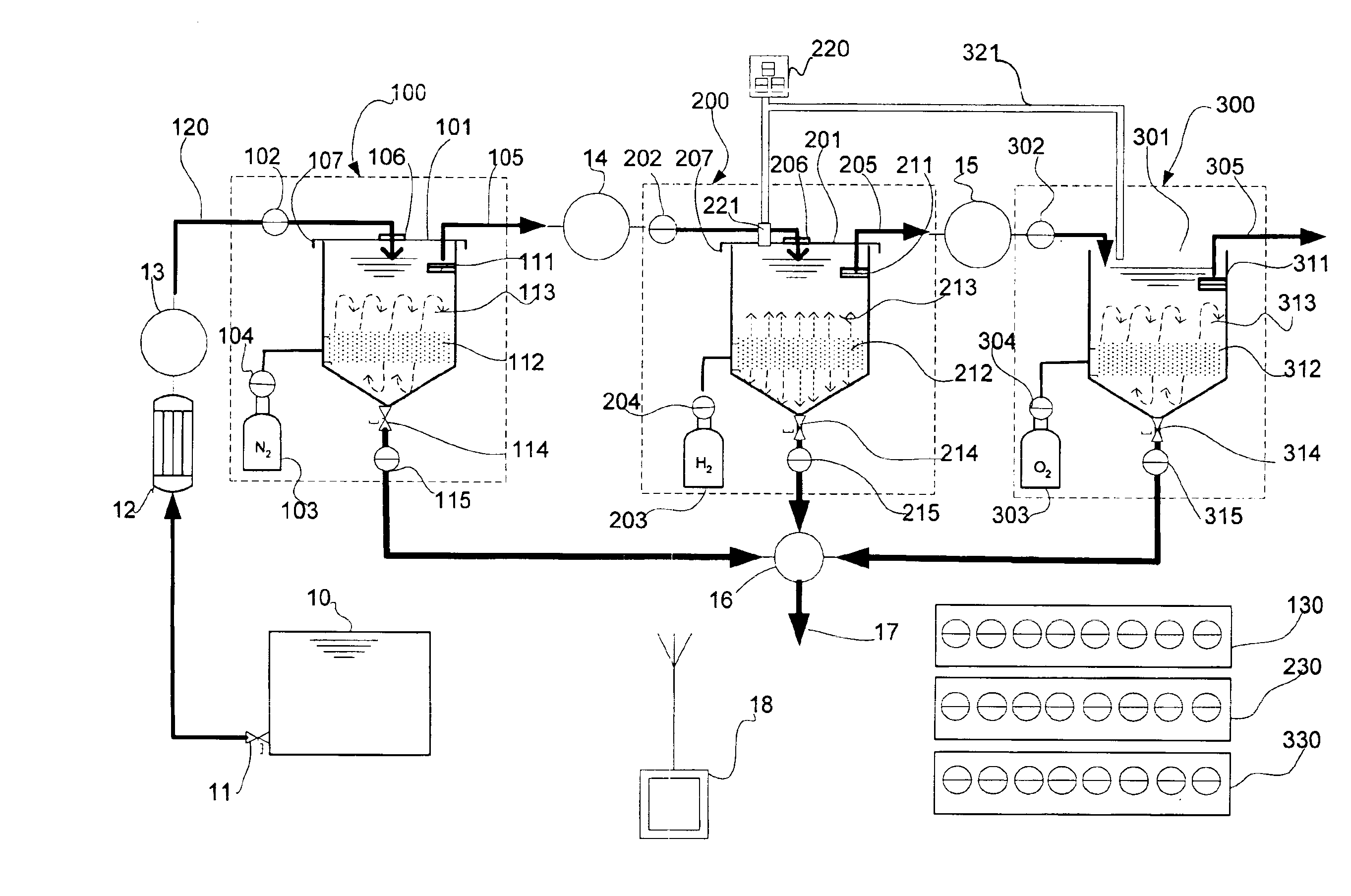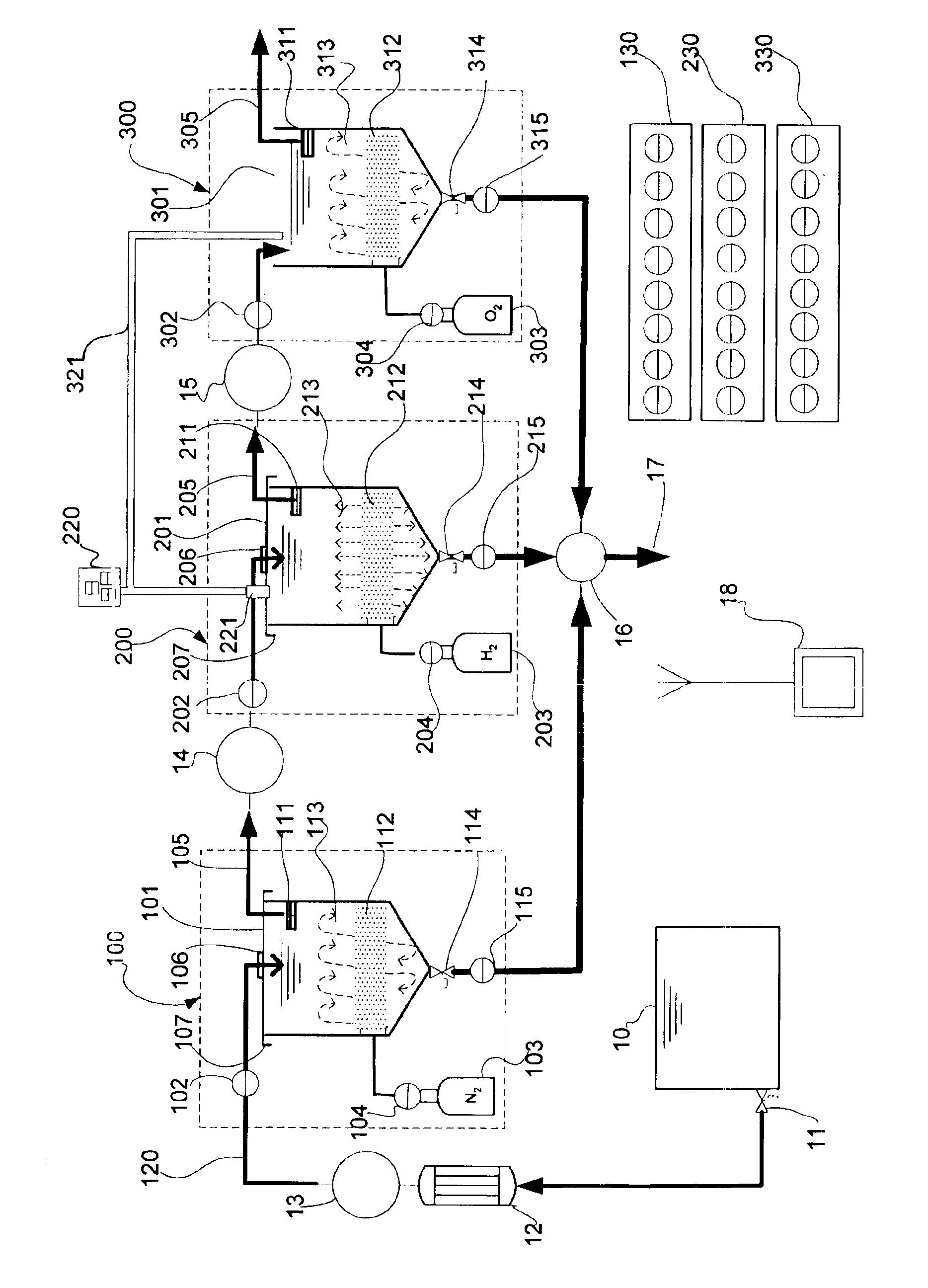System and method for bioremediating wastestreams containing energetics
a waste stream and energetic technology, applied in the field of system and method for bioremediation waste stream, can solve the problems of requiring extensive time to complete, and achieve the effects of convenient integration, control, and ease of automation
- Summary
- Abstract
- Description
- Claims
- Application Information
AI Technical Summary
Benefits of technology
Problems solved by technology
Method used
Image
Examples
Embodiment Construction
Refer to the FIGURE. Three batch-processing, or SBR, systems 100, 200, 300 are operated in series to breakdown energetics in a waste stream and provide re-cycled water and benign solid waste. A source 10 of waste, such as a holding tank for pink water, provides the waste stream. The waste stream may be released on a pre-specified schedule via a power-actuated control valve 11 in a source tank 10 or other carrier such as a direct pipeline from a processing system. The waste stream may be provided to the first SBR system 100 by a pump 13. The entire treatment process may be controlled by a central controller 18 consisting of one or more microprocessors and necessary communications paths to the various components of the treatment system. This controller 18 may communicate via hardwires, fiber optics, hydraulics, pneumatics, or may use any of a number of wireless technologies such as RE or infrared, or combinations thereof, thus enabling flexibility in upgrading control devices as techn...
PUM
 Login to View More
Login to View More Abstract
Description
Claims
Application Information
 Login to View More
Login to View More - R&D
- Intellectual Property
- Life Sciences
- Materials
- Tech Scout
- Unparalleled Data Quality
- Higher Quality Content
- 60% Fewer Hallucinations
Browse by: Latest US Patents, China's latest patents, Technical Efficacy Thesaurus, Application Domain, Technology Topic, Popular Technical Reports.
© 2025 PatSnap. All rights reserved.Legal|Privacy policy|Modern Slavery Act Transparency Statement|Sitemap|About US| Contact US: help@patsnap.com


